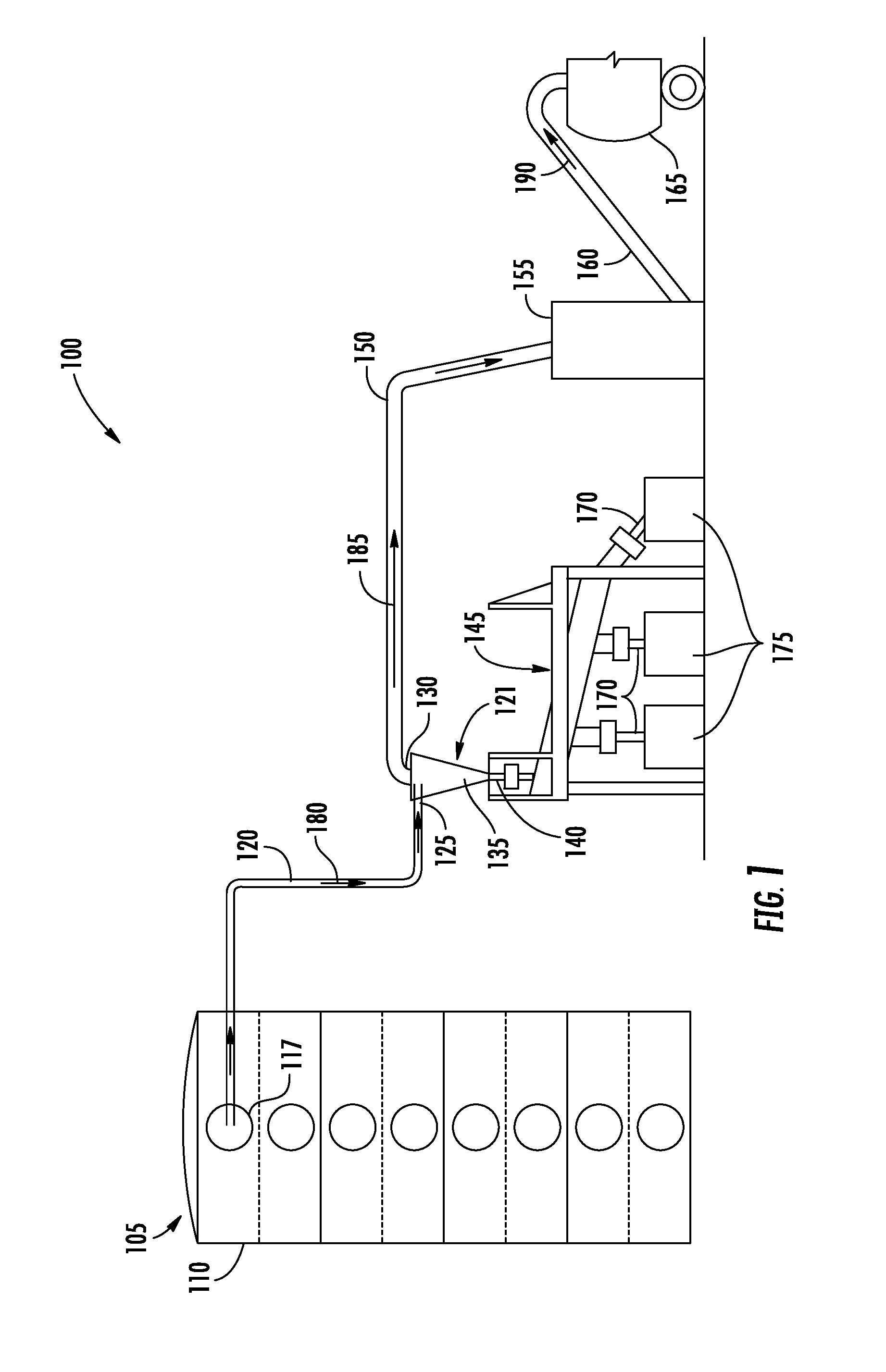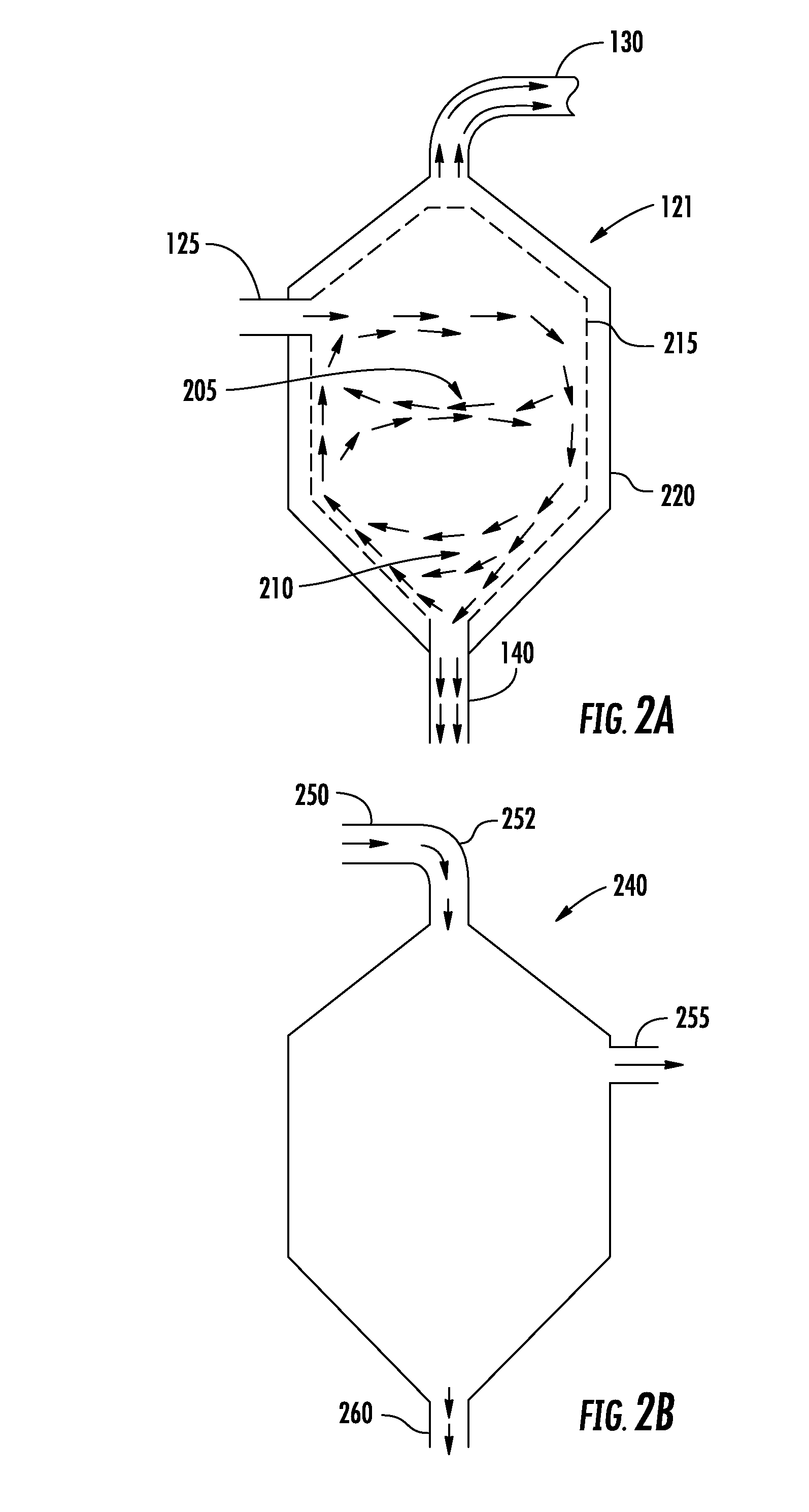Systems and methods for converter bed unloading and loading
- Summary
- Abstract
- Description
- Claims
- Application Information
AI Technical Summary
Benefits of technology
Problems solved by technology
Method used
Image
Examples
Embodiment Construction
[0022]The present invention relates to systems and methods for catalyst converter bed unloading and loading. The system and method of the invention may be used for unloading, screening and loading material, such as catalyst (for example vanadium pentoxide or other catalyst material) and rock (for example quartz rock), in acid plant converters, for example, sulphuric acid plants.
[0023]In one embodiment, a system 100 for vacuum unloading and screening material, such as catalyst, rock, and waste material, from one or more converter beds 110 of a catalyst converter 105. FIGS. 1 and 2A, illustrate an example system 100 and cyclone 121, for unloading material using the cyclone 121 with an inline feed inlet 125. The system 100 may include a vacuum source 165; dust collector 155; a material sorting mechanism 145, cyclone 121; one or more material storage containers 175, feed hose 120, and vacuum hoses 150 and 160.
[0024]The vacuum source 165 may, for example, be a conventional vacuum truck a...
PUM
| Property | Measurement | Unit |
|---|---|---|
| Diameter | aaaaa | aaaaa |
| Volume | aaaaa | aaaaa |
| Volume | aaaaa | aaaaa |
Abstract
Description
Claims
Application Information
 Login to View More
Login to View More - R&D
- Intellectual Property
- Life Sciences
- Materials
- Tech Scout
- Unparalleled Data Quality
- Higher Quality Content
- 60% Fewer Hallucinations
Browse by: Latest US Patents, China's latest patents, Technical Efficacy Thesaurus, Application Domain, Technology Topic, Popular Technical Reports.
© 2025 PatSnap. All rights reserved.Legal|Privacy policy|Modern Slavery Act Transparency Statement|Sitemap|About US| Contact US: help@patsnap.com



